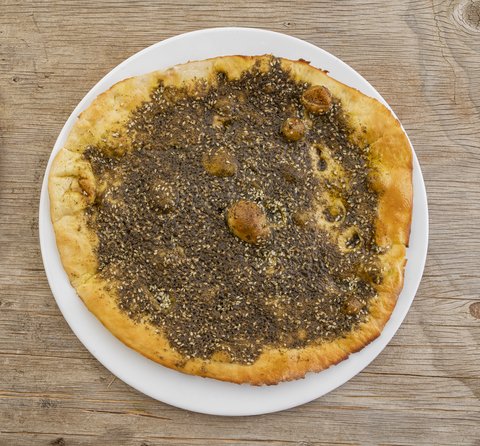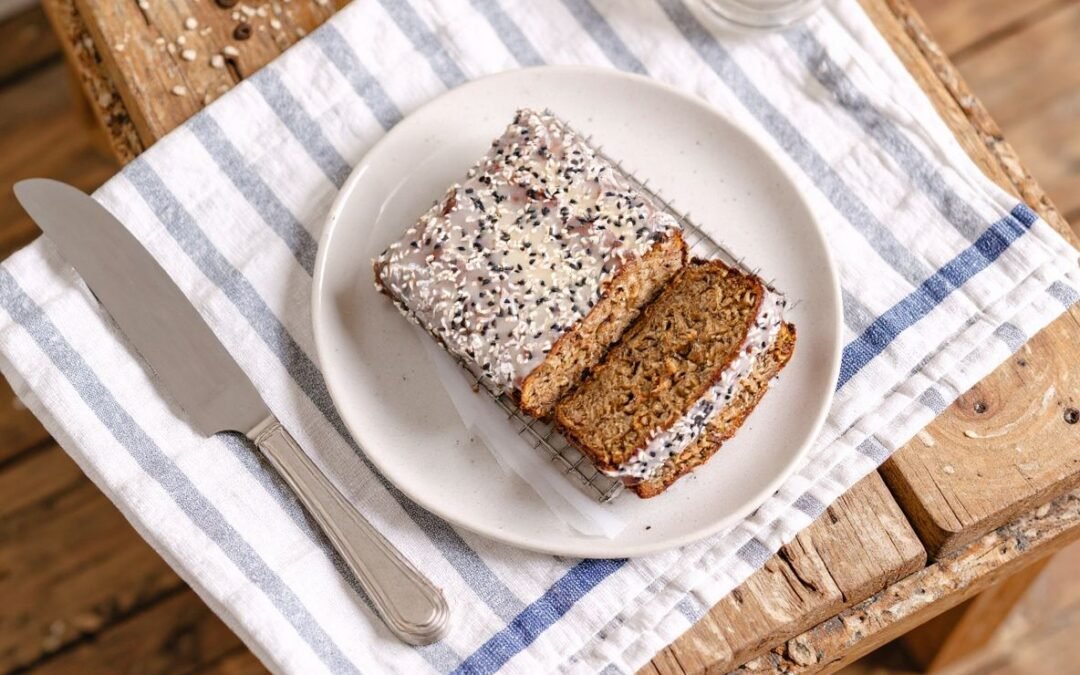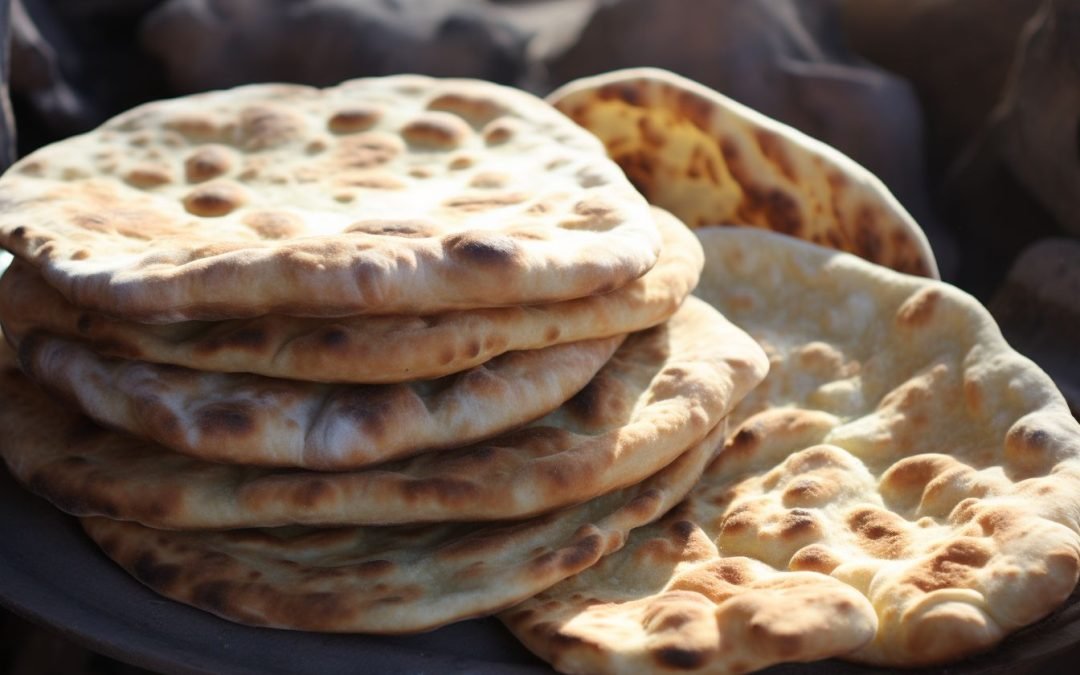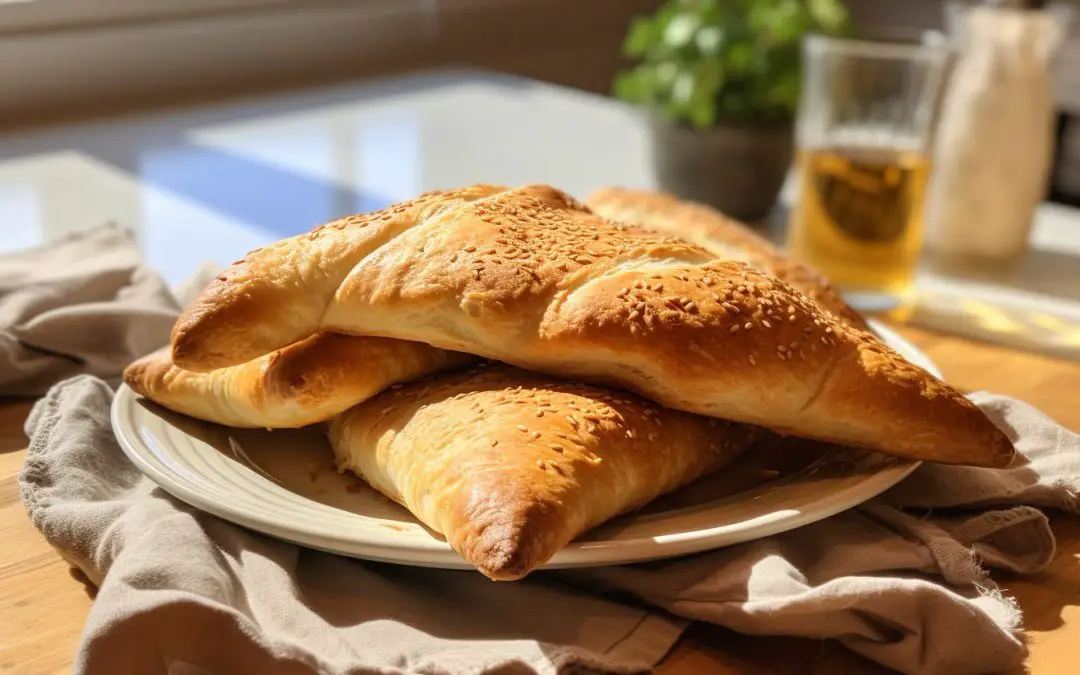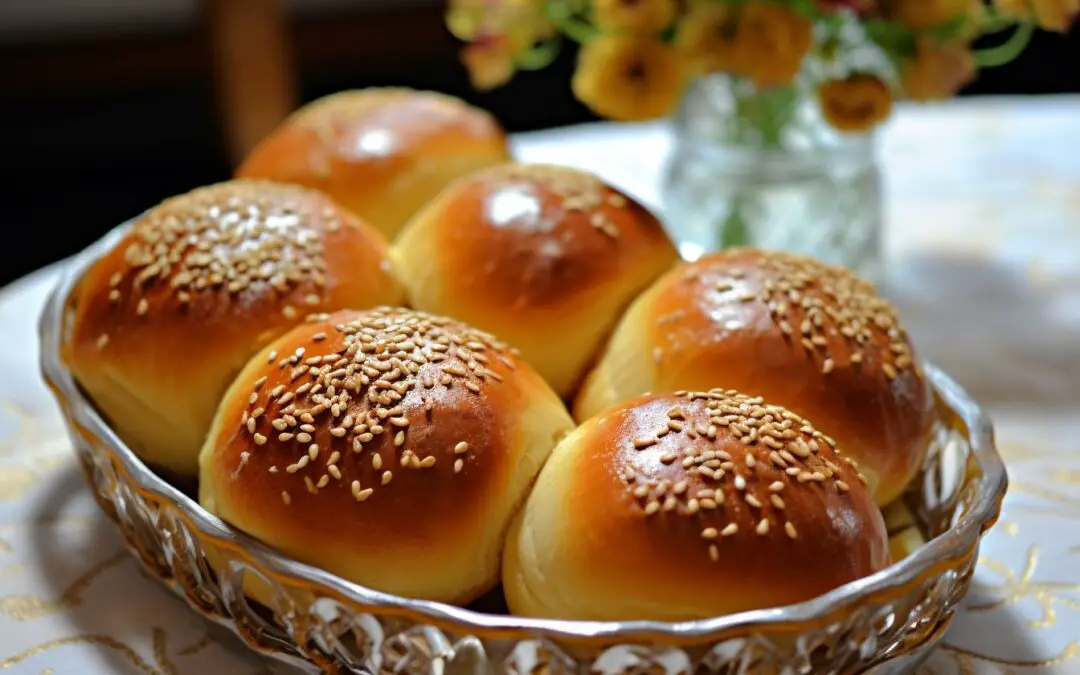An ordinary meal can sometimes turn into a unique experience. That’s exactly what happened during a recent meal I had with my parents in Houston, Texas. The main dishes were great, but the real star of the meal was the appetizer: fresh Lebanese zaatar bread. And guess what? I was able to get the recipe, which I would like to share with you. Here is the story:
Dining at a Middle Eastern restaurant in Houston recently was an unforgettable memory! The experience was simply amazing, leaving me with nothing other than positive feelings. As soon as we entered, the inviting smell of herbs and spices greeted us and welcomed my parents and me. This warm fragrance became the perfect foreshadowing of what the rest of our visit would hold.
Our delectable meal commenced with the arrival of an order of freshly baked, steaming hot Lebanese Zaatar bread. This tasty treat was lovingly crafted right in front of us by a young, enthusiastic Lebanese man who was proud and passionate about his work. His dedication to delivering top-notch quality was quite evident as we watched him skillfully shape the dough before throwing it into the oven.
The freshly baked bread was warm and inviting, with a soft and fluffy texture that melted in the mouth. Its alluring aroma filled the air as it was tantalizingly full of flavor, making it an irresistible treat. An aromatic combination of herbs and spices, including thyme, sumac, and sesame seeds, topped it. This fragrant seasoning gave the dish just the right amount of flavor and made it an ideal way to start our meal. The young man’s attention to detail was evident in every bite, and the quality of the bread impressed me.
Unfortunately, our dining experience was momentarily interrupted when one of the servers dropped a tray of food. The loud noise surprised us, but the team showed promptness and skill in managing the scenario professionally. The kitchen immediately got to work, clearing the broken dishes away and on to enjoy preparing a fresh round of food for those who were affected by the breakage.
Despite this insignificant impediment, the remainder of our repast was incredibly delectable. We requested a selection of dishes, including stuffed grape leaves, hummus, tabbouleh, and kebabs. And the chef prepared and presented all of them to us. Every bite was full of flavor. The stuffed grape leaves in particular had a delightful mixture of aromatic herbs and succulent rice that melted away on the tongue, providing a texture that was simply sublime. The hummus, which had a delightful faint lemon flavor, being creamy and smooth, complemented perfectly the pita bread. The salad known as tabbouleh featured a combination of crunchy and crisp ingredients such as parsley, mint, and tomatoes. All these ingredients worked together to create a flavorful treat. The kebabs featured a perfect harmony of delectable flavors illumined and intensified by their flavorful blend of spices. Our mouths watered at the juiciness, as we sampled each bite.
At the end of our meal, I felt that I must find out the secret behind the fresh Lebanese zaatar bread we had enjoyed. I was really happy when the creator of the delicious dish agreed to let me in on the secret recipe! Smiling widely, I asked him if I could get his permission to look at how it was made and he happily said yes. As we chatted, I learned that the process of making the ideal zaatar bread involves combining only the best-chosen ingredients and a gentle touch when handling the dough. Critical components for achieving this include quality and care. The young man happily shared his tips and tricks with me, demonstrating the process, and I was grateful for his generosity.
Before departing the restaurant, I was fortunate enough to meet the owner; a hospitable and courteous individual. It was pleasant talking with them, and I made sure to thank them for their welcoming hospitality. He wanted to introduce Houston to the delights of Middle Eastern cuisine, inspired by and in honor of his culture. His ambition was to share what he loved with the people of his adopted home city. He was extremely proud of his restaurant and the staff members who worked hard each day to guarantee that the customers had a pleasant experience while dining in their restaurant. His relentless dedication spearheaded remarkable lengths to ensure a stellar encounter.
My experience of visiting a Middle Eastern restaurant in Houston was truly unforgettable. The dining experience at this restaurant was truly enjoyable from the moment you walked in and the warm and inviting atmosphere greeted you. The food was delicious, with generous portions and attentive staff who went out of their way to ensure that your stay was pleasurable. The staff took care of every little detail, making for an unforgettable experience. I departed the restaurant with a contented stomach and a newfound admiration for the wonderful flavors and fragrances of Middle Eastern cooking. Additionally, I was fortunate enough to acquire the recipe for that fresh zaatar bread, which I am sure will become a regular part of my cookery repertoire in times to come.
So here is the recipe for this mouth-watering zaatar bread:
Ingredients:
For the Dough:
- 1 cup of warm water (at a temperature range of 100°F to 115°F)
- 7 grams (2 1/4 tsp) of active dry yeast (1 envelope)
- 2 tsp of honey
- 400 grams (3 1/4 cups) of all-purpose flour (additional flour as needed)
- 1 1/2 tsp of kosher salt
- 2 tbsp of extra-virgin olive oil
For the Topping:
- 1/4 cup of extra-virgin olive oil
- 6 tsp of za’atar.
How to make fresh Lebanese zaatar bread?
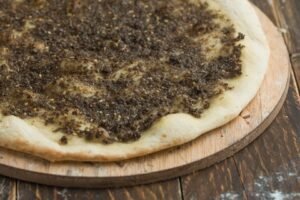
- Mix the warm water, yeast, and honey in a bowl attached to the stand mixer. Leave it undisturbed until it becomes foamy—usually within 5 minutes.
- Using the dough hook attachment, mix the yeast mixture, flour, salt, and olive oil on low speed until a smooth dough is formed; this kneading process should take around 5 minutes. The texture of the dough should be tacky, not excessively sticky. To achieve this, add 1-2 tablespoons of water if it’s too stiff, or 1-2 tablespoons of flour if it’s too loose.
- Form the dough into a ball and put it in a clean, lightly oiled bowl. Place plastic wrap over the bowl and set aside. Allow the dough to rise until it has doubled, which will take about one hour.
- Preheat oven to 425°F and place a baking sheet along with parchment paper. The dough should be divided into 6 equal portions., every 115 grams or 4 ounces ensuring the formation of smooth balls. Take each equal portion from the bowl and shape it until it is a uniform 1/4 inch thick circle of roughly 6-inch perimeter. Place each disc of dough on the prepared baking sheet and repeat with the remaining dough until you have 6 flat discs.
- In a small bowl, combine the olive oil and za’atar. With a spoon, spread the mixture over 6 discs of dough like a pizza, leaving a small border around the edges.
- Bake the bread for 14- 16 minutes until they show signs of browning around the edges. These breads make a delicious meal – be it warm or even at room temperature.
Fresh Lebanese zaatar bread is not only a staple at breakfast or lunch, but it’s also a delicious snack to enjoy between meals. This bread will make a great addition to any meal and serve as a perfect appetizer for your guests.
